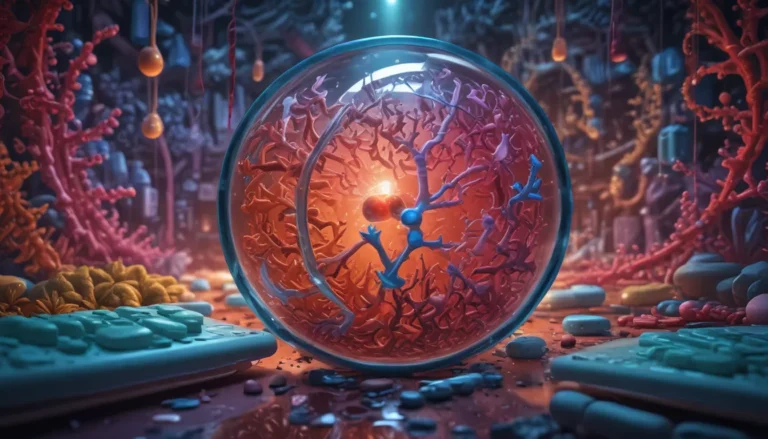A Note About Images: The images used in our articles are for illustration purposes only and may not exactly match the content. They are meant to engage readers, but the text should be relied upon for accurate information.
In recent times, viral diseases have become a significant concern, especially with the emergence of the COVID-19 pandemic. These diseases, caused by viruses, have the power to impact human health and society on a global scale. While some viral illnesses like the common cold or flu are well-known, there are many surprising facts about viral diseases that deserve exploration. From their incredible adaptability and mutation capabilities to their varied transmission methods, viral diseases continue to pose a fascinating yet formidable challenge. In this comprehensive guide, we will delve into 13 surprising facts about viral diseases that will not only enhance your understanding of these microscopic invaders but also shed light on their profound impact on the world we live in.
Unlocking the World of Viruses:
-
Viruses: The Smallest Infectious Agents: Viruses are incredibly tiny, even smaller than bacteria. Composed of genetic material enclosed in a protein coat, viruses cannot reproduce or carry out metabolic functions outside of a host cell.
-
Infecting All Life Forms: From plants to animals to other microorganisms, viruses have the ability to infect a wide range of organisms. They have been discovered in nearly every environment on Earth.
-
Eradicating with Vaccines: Vaccines have played a pivotal role in preventing and eradicating viral diseases such as smallpox and polio. By stimulating the immune system to produce an immune response, vaccines prepare the body to combat the virus if exposed.
Unveiling the Complexities of Viral Diseases:
-
Leading to Chronic Illnesses: While many viral infections resolve on their own, some viruses can lead to chronic or long-term illnesses. For example, hepatitis B and C can cause liver cirrhosis and cancer.
-
Rapid Mutations: Viruses have high mutation rates, allowing them to adapt to their environment and host. This rapid mutation is the reason why the flu virus changes every year, necessitating a new flu vaccine annually.
-
Diverse Transmission Routes: Viral diseases can be transmitted through various routes, including respiratory droplets, sexual contact, contaminated food and water, and even insect bites.
-
Long-Term Presence: Some viruses, like the herpes viruses, can establish a latent infection, remaining hidden in the body for years or even a lifetime. These viruses can reactivate and cause symptoms when the immune system weakens.
Unraveling the Historical and Global Impact of Viral Diseases:
-
Shaping Human History: Pandemics caused by viruses have left a profound impact on human history. Examples include the Black Death caused by the bacterium Yersinia pestis and the 1918 flu pandemic caused by the H1N1 influenza virus.
-
Zika Virus and Birth Defects: The Zika virus gained global attention due to its association with microcephaly, a condition where babies are born with unusually small heads and brain abnormalities. It is primarily transmitted through mosquito bites.
-
HIV/AIDS Epidemic: The Human Immunodeficiency Virus (HIV) has affected millions worldwide, leading to Acquired Immunodeficiency Syndrome (AIDS). It weakens the immune system, making individuals more susceptible to other infections and diseases.
Embracing the Current Challenges:
-
COVID-19 Pandemic: The novel coronavirus SARS-CoV-2 emerged in late 2019, causing the COVID-19 pandemic. Its rapid spread has impacted all aspects of life, emphasizing the need for global preparedness for viral outbreaks.
-
Viral Influence on Human Evolution: Viruses have played a role in shaping human genetic makeup throughout evolution. From contributing to the development of the placenta to leaving traces of viral DNA in our genome, viruses have left a lasting impact.
-
Antiviral Medications: While antibiotics are ineffective against viruses, antiviral medications have been developed to target specific viral infections. For example, antiretroviral drugs are used to manage HIV infections.
Conclusion: Navigating the World of Viral Diseases
In conclusion, viral diseases remain a significant global health concern, impacting millions of lives annually. By uncovering these surprising facts, we have gained a deeper understanding of the nature and impact of these diseases. It is crucial to highlight the importance of widespread vaccination campaigns in preventing viral diseases and maintaining good hygiene practices to reduce the risk of infections. Supporting scientific research and public health initiatives is essential in combating these invisible threats effectively. By staying informed and taking proactive measures, we can safeguard ourselves and contribute to global efforts in eradicating viral diseases.
Frequently Asked Questions:
- What are viral diseases?
-
Viral diseases are illnesses caused by viruses, tiny infectious agents that can only replicate inside living cells. They can affect various parts of the body with varying severity levels.
-
How do viral diseases spread?
-
Viral diseases can spread through direct contact with an infected person, airborne transmission, or contaminated surfaces. Some viruses can also be transmitted through vectors like mosquitoes or ticks.
-
Are all viral diseases treatable?
-
Not all viral diseases have specific treatments. While antiviral medications are available for certain infections, most viral diseases are managed through supportive care. Vaccines remain the most effective preventive measure.
-
Can viral diseases be prevented?
-
Yes, many viral diseases can be prevented through vaccination and good hygiene practices. Avoiding close contact with infected individuals and using preventative measures against vectors can also reduce the risk of infections.
-
Are viral diseases only a human health concern?
- Viral diseases can affect both humans and animals, underscoring the importance of a One Health approach. Some viruses can cross species barriers, causing diseases in multiple species.
In our quest to understand viral diseases, we unravel the mysteries behind these microscopic adversaries. Antiviral drugs offer hope in our ongoing battle against these illnesses, showcasing the remarkable advancements in medical science. Delving into the characteristics of viral diseases such as rabies provides valuable insights into their impact on both humans and animals. With a solid grasp of antiviral medications, we equip ourselves with essential tools to combat these invisible threats effectively. As we continue to learn and adapt, we strengthen our defenses and contribute to a healthier world for all.






